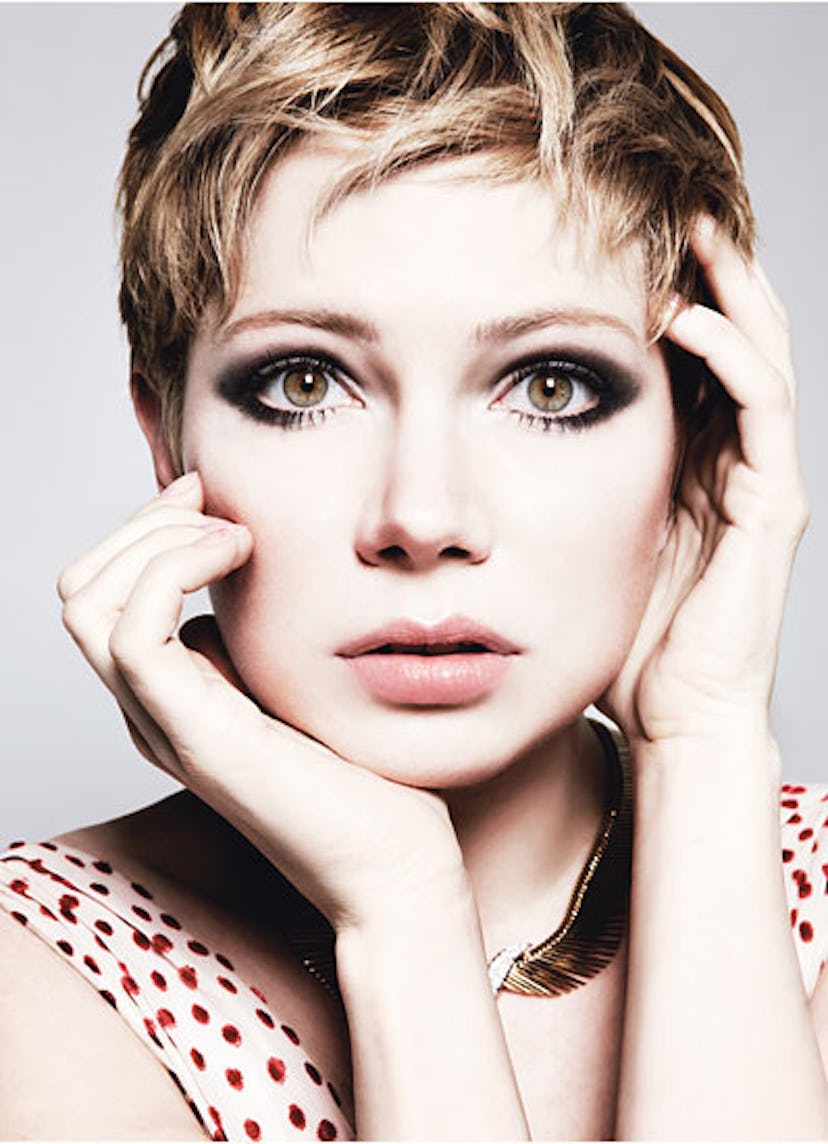Start with the assumption that glamour is an art—or if not an art, then at least an artifice, which is to say that it isn’t life, but it’s close. Think of it as a distillation of experience, a concentrate, something made—made to be seen: on stages, catwalks, movie screens, magazine pages, and city sidewalks, sometimes, but only briefly. In its purest form, it’s a property of pictures, still and moving, a collaboration between a woman and a lens, the curve of flesh and the curve of glass. (It’s no accident that two of the most glamorous roles in Hollywood history are about women and photographers: Audrey Hepburn in Funny Face and Grace Kelly in Rear Window.)
It isn’t beauty, not exactly or not quite. For one thing, glamour is far more difficult to find: The world is full of beautiful women, and many of them look lovely in photographs, but very few of them have the specific charisma that makes a photograph beguiling. Nor is talent in itself anywhere near enough, nor intelligence, nor charm, nor virtue. All of them are valuable qualities—indispensable, even—but essentially democratic, evenly distributed, next door. Glamour is much rarer, as rare as those elements at the end of the periodic table. Glamour is unfair—one of the only things in this unfair world that are admirable for being so.
It is a fleeting thing, captured in moments, experienced in between heartbeats. It took Rita Hayworth just seconds to establish a standard of glamour that she spent, by her own admission, the better part of her life trying to live up to, or perhaps live down. “They went to bed with Gilda,” as she famously put it. “And they woke up with me.” Well, only a knave wants the woman in the photograph to be the woman next to him when he wakes, and only a fool expects it. But knaves and fools aren’t in short supply. Nor, I might add, are women themselves immune to that kind of mistake. I saw so-and-so on Fifth Avenue this morning. She didn’t look like such a star…Well, no, but magic is difficult, even for those who have a gift for it, and in any case, it should be used sparingly. A pinch is enough. Any more would be less.
Glamour isn’t real, I say, but that doesn’t mean it’s fake. It takes its cues from the character of the women who bear it, and as such, it comes in as many forms as do women themselves. There is the glamour of innocence (look at Michelle Williams: No matter how much she’s gone through, there’s something inside her that she hasn’t yet learned to hide) and the glamour of experience (Julianne Moore, who appears to be composed entirely of kept secrets) and even the glamour of innocence-in-experience (Scarlett Johansson, who seems to have been 30 when she was 15 and will probably be 15 when she’s 30). There is classic glamour—see Natalie Portman, as immaculately and incontestably enchanting as a Shakespearean sonnet—and Julia Roberts’s down-home glamour. It can be sweet or cruel, sleek or dirty, barefoot or in heels, bright as an afternoon or dark as an alley—or all of those things at once.
It is unexpected. The old saying about Hollywood applies here as well: No one knows anything. I’ve casually surveyed countless people over the years—fashion directors, photographers, and various women with various interests—and none of them can agree on the constituents of glamour. Is it wide cheekbones that rake the light, symmetry (you’d be surprised how often this comes up, a bit of pop-psychological nonsense), small features, and thin bodies? Because they are trying to sell clothes, you know. Or, no, it’s about large, bright, expressive eyes and curvy bodies, because they are trying to sell a way of being, a character for whom the clothes are ultimately only accessories. Given all this disagreement, it’s a wonder we can make glamour at all.
It’s a wonder, too, that we even try. Glamour is among the most superfluous of things. Many have never seen it, let alone borne it; many more have paid it no mind. It’s utterly frivolous, strictly speaking, worthless, and even those who are blessed with the ability to manifest it—photographers and the people they shoot—tend to denigrate their gift and sometimes abandon it. Because it’s nothing, really: just a bit of flash and glitter, a smile, and goodbye. It’s not going to save the world.
No, but it’s one of the things that can make the world seem worth saving. Pleasures aren’t so easy to come by, after all, and the purer the pleasure, the more pointless and inexplicable, the more we tend to prize it. Glamour is one of life’s great indulgences, as addictive as opium; it really does exist, and when you see it, see it true, see it flash before your eyes, it’s fantastically impressive—and in a curious way, redemptive. Because it offers us a glimpse into another world, more perfect than this one, and for that moment, enchantment swirls around us. And then it is gone again.
Face Forward
Michelle Williams, makeup by Fulvia Farolfi for Chanel.
Hair by Jimmy Paul for Bumble and bumble; makeup by Fulvia Farolfi for Chanel; manicure by Yuna Park at Streeters.
